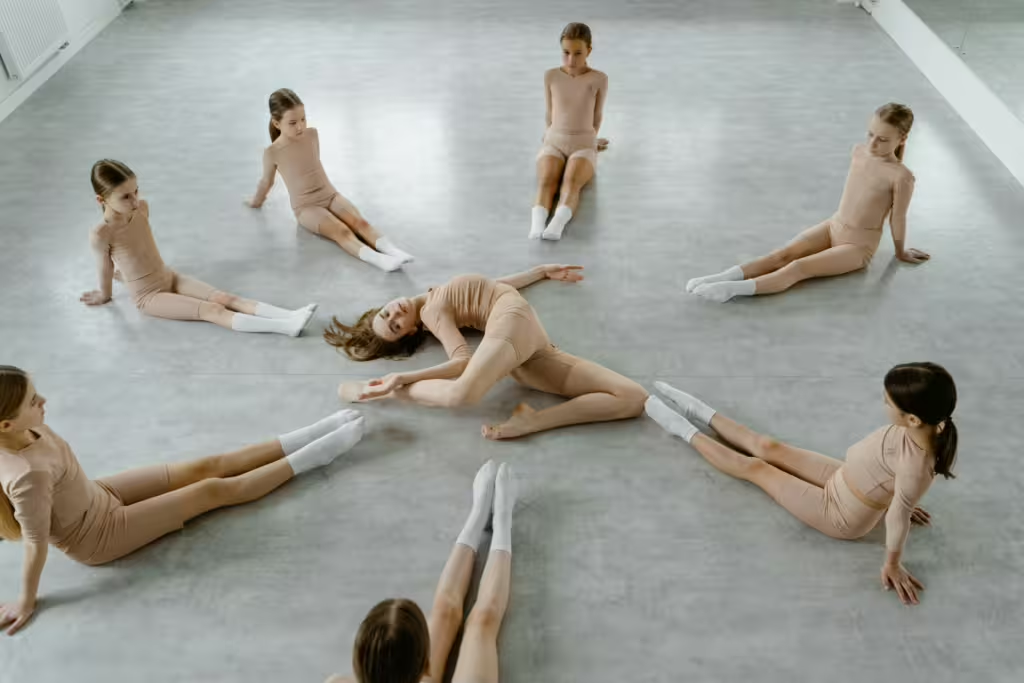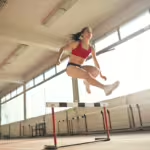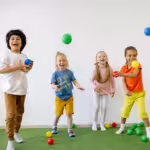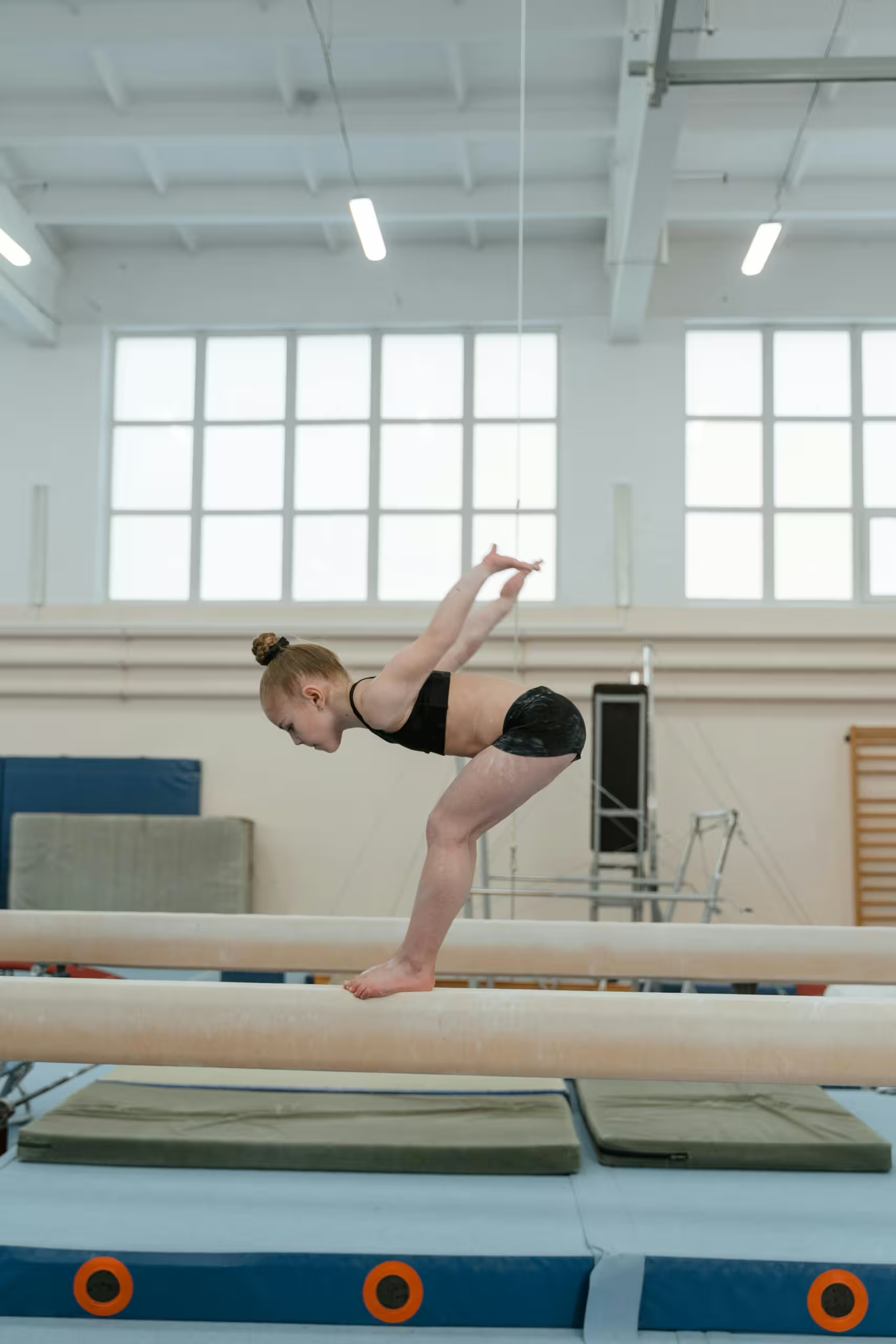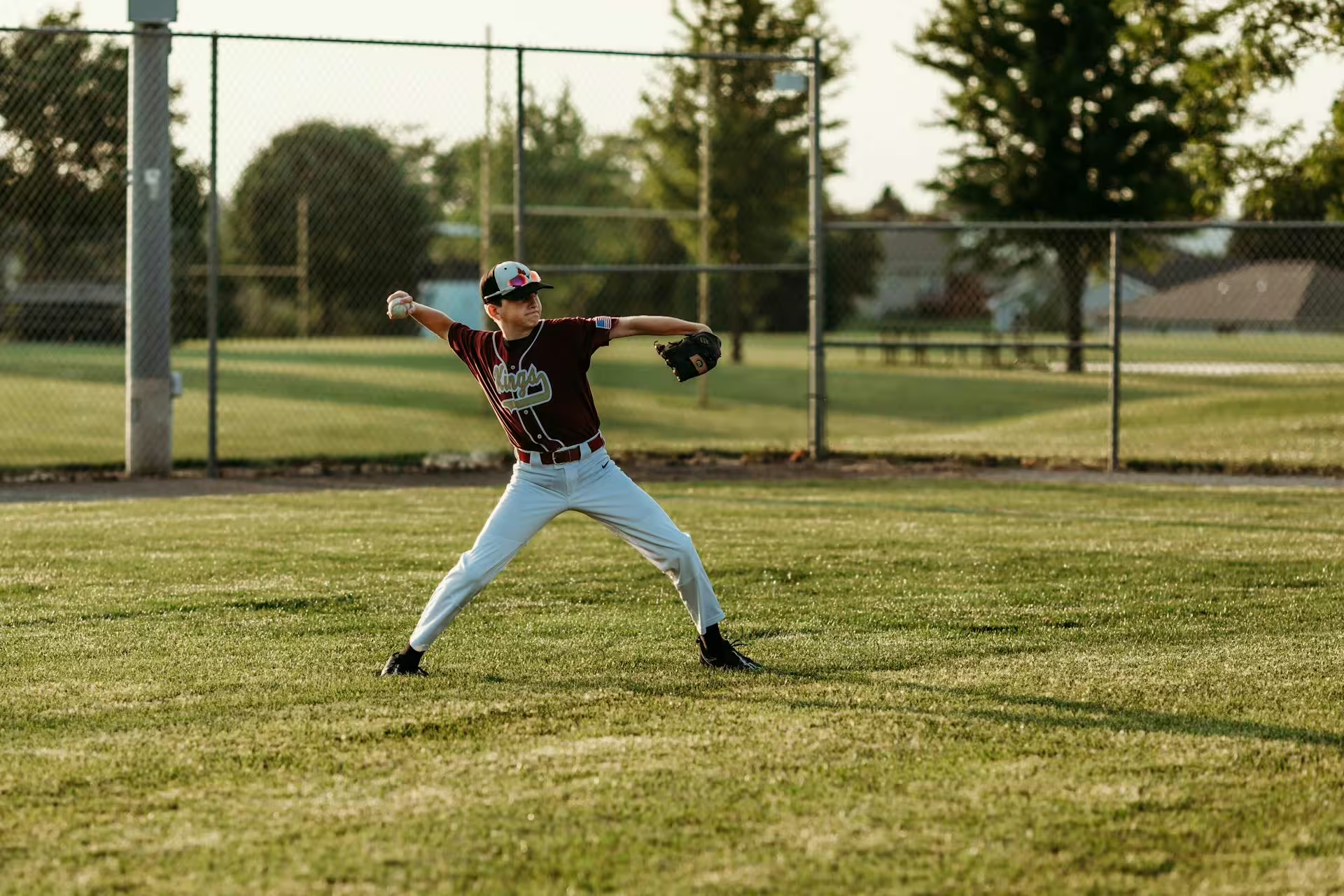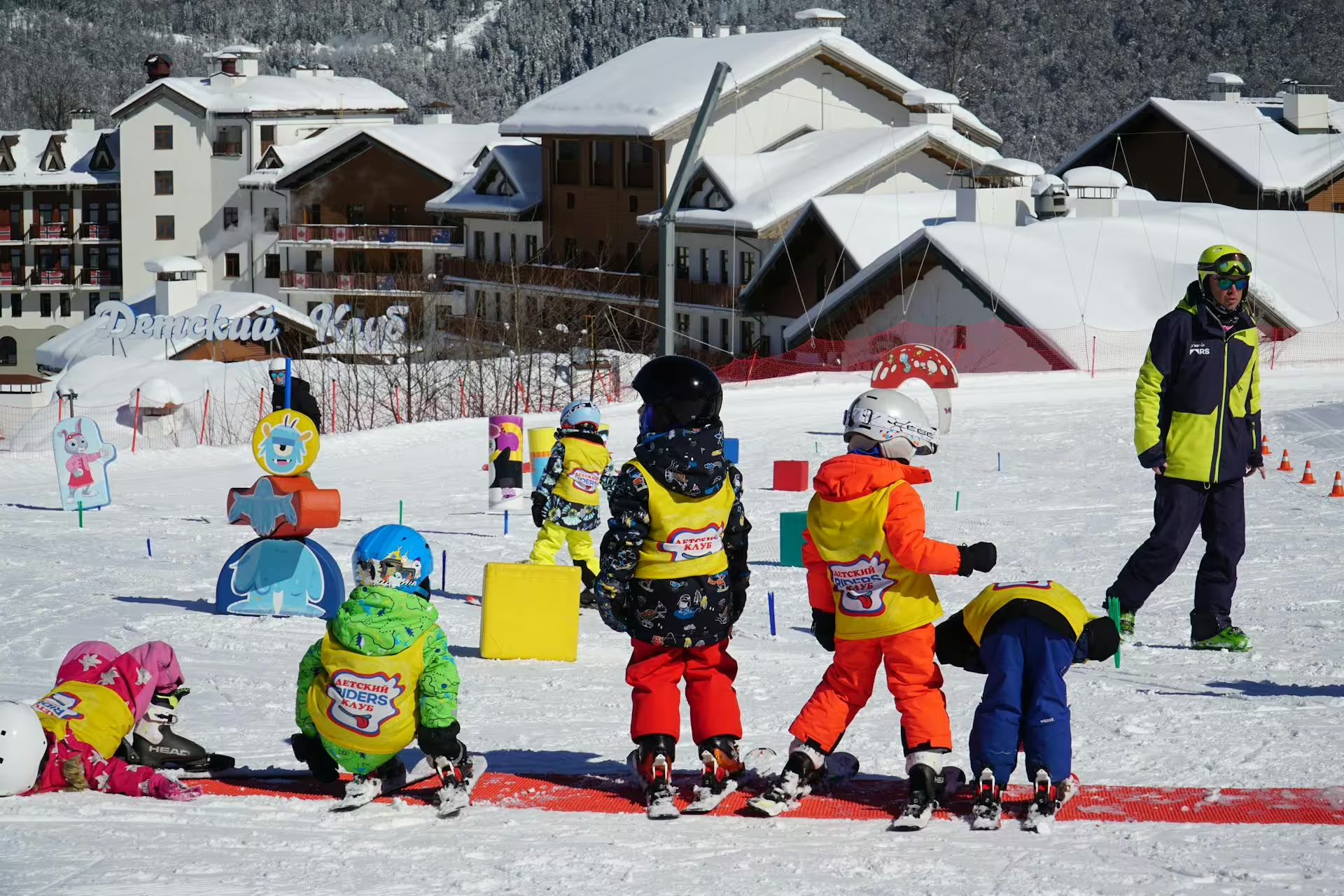Though not everyone is aware of its benefits, gymnastics remains one of the most dynamic and developmental sports a child can try in their formative years. Playing the sport improves strength, flexibility, balance, and coordination—all of which are essential building blocks for lifelong physical fitness. Yet, the benefits of gymnastics goes beyond just physical benefits.
Gymnastics encourages mental focus, discipline, and body awareness in children. These are qualities that will help them in other sports but also be valuable in other everyday activities and learning areas. The myriad benefits notwithstanding, many parents are a bit unsure how they can give their children time enough to practice, particularly if they don’t have a hime gymnasium set up.
The thing is, you don’t need a full gym to get started. Indeed, with proper supervision, basic equipment, and a little creativity, your kids can safely explore gymnastics at home. You too can turn your everyday space into an exciting movement zone that will allow your kids to get some energy out and some practice in!
In this article, we will offer parents a complete guide to beginner gymnastics. We will go over beginner skills, as well as age-appropriate activities. So, shoes off people and let’s get started!

Why Try Gymnastics at Home?
Gymnastics at home might seem like a dangerous proposition at first glance but bear with us for a bit here. Despite the concern for safety, practicing the sport at home, albeit in a safe environment, offers many benefits that extend well beyond the obvious physical improvements.
First and foremost, it is a low-cost activity—there’s no need for expensive gym memberships, transportation fees, or specialized attire. For parents or families that have financial barriers to entry, this makes it ideal for introducing kids to the sport to see if it is worth the investment of time, distance, and money. At the same time, this form of gymnastics makes it a very family-friendly option; something that anyone can try.
In addition, flexibility in practice times means that your kids can engage in activity when it suits them best, whether early morning, after school, or weekends; basically whenever you all have free time. Moreover, this activity is unaffected by weather or gym schedules.
Gymnastics at home helps children to develop foundational fitness skills that benefit other sports like soccer, dance, or swimming, making it an excellent cross-training tool. Beyond the obvious physical gains, gymnastics boosts a child’s self-confidence as they learn new skills. They also get to feel as their bodies gain control and coordination with each passing activity. Most importantly, gymnastics “practice” can transform playtime into purposeful movement that feels fun, helping children build a positive attitude towards exercise without even realizing it. In an age where sedentary lifestyles and child obesity are at an all-time high, this love of physical activity may come in quite handy as they grow.
Still, parents might still worry about safety in a place that is perhaps lacking essential safety gear such as mats. As with any physical activity at home, safety and supervision are essential and with proper guidance and a little preparation, home gymnastics can be both safe and highly enriching for your child.
Safety First: Setting the Stage
Before starting any gymnastics activity in the home, it is important that parents ensure the environment is as safe and inviting as possible. Remember, safety is the foundation for a successful and enjoyable experience for everyone.
Clear the Area: When selecting a place for your child to practice, make sure to choose a spacious spot free of sharp corners, fragile objects, or hard furniture. This will prevent accidental bumps and bruises…as much as humanly possible. Accidents can happen even with the best preparations, just be mindful and attentive. A living room with rugs or padded carpet, a basement with soft flooring, or a grassy backyard are all great places to begin. Each one provides an ideal cushioned environment. Also, make sure the floor isn’t slippery and that there’s plenty of room for movement without obstacles.
Use Appropriate Equipment: While a full tumbling mat isn’t strictly necessary, it might be a good idea to invest in a foldable gymnastics mat or foam blocks. These contrivances can provide extra cushioning for rolls and landings. You could also opt for some soft foam balance beams if you so desire. That said, taped lines on the ground offer balance practice without any added cost or risk. Everyday items like pillows, couch cushions, and yoga mats can also be creatively co-opted to support drills in a safe, comfortable manner.
Supervise Activities: Vigilance is key here. Parents should always stay close while their child is practicing, especially if you have multiple children tumbling around your living room. Remember, your presence provides reassurance but it also allows for immediate correction of unsafe movements. Always encourage your child positively and be ready to gently intervene if you see risky behavior occurring. Be sure to remind your budding gymnasts not to attempt any advanced moves they might have seen online or on TV; these moves are better suited for sites with proper coaching, padding, equipment, and spotting.
Focus on Fundamentals: These home gymnastics practices are a great way to focus on the fundamentals. Try and emphasize learning and mastering basic skills such as forward rolls, handstands against a wall, and balance work before trying advanced tricks. It may seem slow, at times, but this steady, progressive approach reduces injury risk and builds confidence and proper technique.
Warm-Up and Stretching: The Foundation of Every Session
For children, it’s important to start each gymnastics session with a thorough warm-up and stretching routine. These warm-up exercises are essential for any sports activity, however, and should not be overlooked. Warming up prepares the muscles and joints for activity, increases blood flow, and reduces the risk of injury.
Basic Warm-Up Routine:
- Kids can jog in place or around the room for 2 minutes to raise their heart rate and warm muscles.
- Doing jumping jacks for 1 minute helps to engage the whole body and improve coordination.
- Arm circles and shoulder rolls are great for loosening upper body joints.
- Leg swings and ankle circles are an excellent way to improve hip and ankle mobility.
Stretching:
- Forward bend stretches target hamstrings, thereby enhancing flexibility for bending and rolling movements.
- A proper butterfly stretch can open up the hips, which is important for splits and various gymnastics positions.
- Cat-cow stretches gently mobilize the spine, promoting flexibility and easing tension.
- Silly as it might seem, seal stretches helps improve core flexibility and open the chest.
- Even doing a few wrist circles or gentle wrist stretches will prepare a child’s wrists for weight-bearing activities like handstands.
Remember, stretching should always be gentle and never forced. Kids should be able to hold each stretch for 15 to 30 seconds, but not for much longer. Throughout the warm-up, have your child focus on steady breathing. Also, avoid pushing into pain. This will keep the experience positive and will make every aspect of exercise that comes after, that much safer.
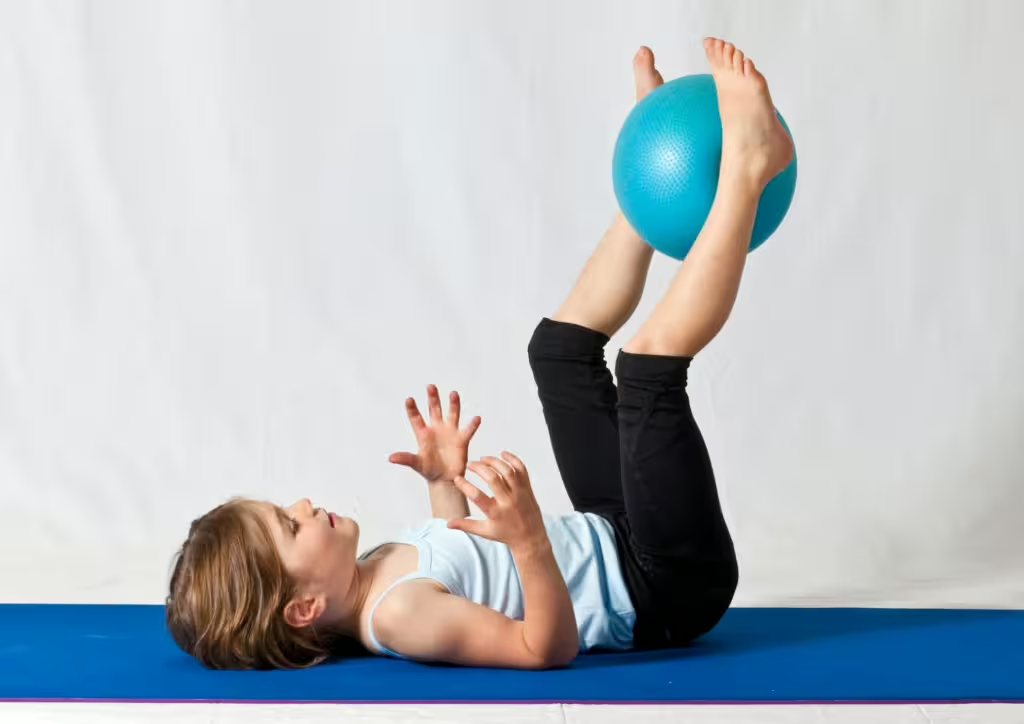
Essential Gymnastics Skills to Master at Home
Forward Roll
The forward roll is a fundamental gymnastics skill that teaches safe rolling and spatial awareness. Kids begin by squatting, tucking their chin to protect the neck, and rolling over a rounded back. They can finish by sitting up or standing. Note that a sloped cushion or soft mat can ease beginner gymnasts into this motion, making the roll much smoother and less intimidating from the get-go.
Cartwheel
Anyone who has ever done a cartwheel as a kid can tell you that it’s not exactly easy but it is fun once you get it right! Cartwheeling develops strength, flexibility, and coordination and achieving it can be a real boost to self confidence. Starting in a lunge, have the child reach their hands to the floor sideways while kicking legs over in sequence. Have them begin practicing over a line or with visual markers for guidance. Progress from the lunge start to a star shape and eventually standing upright. Note that proper form includes straight arms, pointed toes, and a tight body line.
Handstand (Against a Wall)
The ability to do a handstand can feel quite good for a child. It also boosts their upper body strength and confidence, as do many inverted positions. From a lunge, have the child kick up to place feet on a wall and hold briefly. After they have held it for a few seconds, have them return safely to the floor. Make sure to use a clear wall and a soft surface like a mat or carpet for safety. Spotting is helpful until control improves.
Bridge
Doing a bridge stretches the back and shoulders while building arm strength. Have. the child lie on their back with feet flat and hands under shoulders. Then, it’s as simple as push them up into a bridge, while keeping feet and hands firmly planted. Have them keep this hold briefly and return to the floor. You can and should avoid this move entirely if your child experiences any back discomfort whilst doing it.
Balance Beam Drills
As we said earlier, even a strip of masking or painter’s tape on the floor can become a balance beam with the right mindset. Have your kid practice walking forward, backward, and sideways, along the tape/beam. You can add knee lifts or arm positions for challenge, and try having them balance on one foot as they practice. These activities develop concentration and balance that are crucial for gymnasts.
Creative Conditioning for Gymnasts
Bear in mind that strength and core control are vital for gymnasts, but conditioning doesn’t have to feel like a chore. Where possible, try incorporating playful strength-building activities. These types of activities will do much to keep them more engaged.
Fun Strength Activities:
Animal races such as crab walks or bear crawls aren’t just fun, they build muscular endurance. It’s true! There are a thousand silly children’s games that pull double duty as some means of physical, social, or mental improvement, and animal walking is one of them. At the same time, wall sits can be timed and turned into challenges. Plank holds are a bit more boring by nature but can be made fun by adding music or making a game out of holding the position for longer.
There are also Hollow holds (lying on the back in a banana shape) and Superman holds (lifting arms and legs off the floor while on the stomach) both of which improve core strength. Parents can make the games even more enticing by adding points or badges for completed tasks. Thus, you can help encouraging your kids to push their limits, ever so slightly, and always in a positive, meaningful way.
When to Consider Formal Classes
While home gymnastics is a fantastic start for most kids, there will likely come a time when your child has pushed passed all that they are capable of achieving at that level. When that happens, formal classes should become a consideration. This isn’t a bad thing, by any means. If anything, formal gymnastics lessons offer added benefits like professional coaching, spotting for safety, and access to specialized equipment that you simply won’t find in your garden variety living room…you know, like uneven bars and trampolines.
Moreover, classes come with the added bonus of social interaction and team bonding, both of which are just as valuable as physical advancement, and both of which can motivate and enrich your child’s gymnastic experience. Professional instruction ensures a higher degree of safety and greater progression through advanced skills with expert guidance. Parents whose kids are at this stage should look for beginner or recreational gymnastics classes at local gyms or community centers, first. Remember, many such organizations offer trial sessions or short-term commitments to try out.

Cultured Athlete Says…
As you can see, with a little preparation and encouragement, even a space as simple as your living room can become a place where your child develops not just skills, but a lifelong love of being active and adventurous. When it comes to fun and movement, no fancy gym is required—just a safe space, some creativity, and your support as a parent. As parents, it falls to us to nurture our child’s confidence, help them build coordination, and find joy through movement. So long as we do all we can to encourage their love of sport and give them every opportunity to engage with it, we can ensure that their future is a healthy, happy, productive one.
Discover more from CulturedAthlete
Subscribe to get the latest posts sent to your email.

